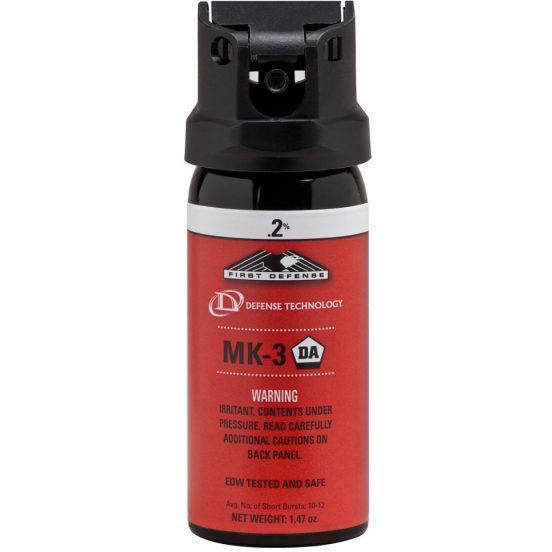Table of Contents
- Understanding the Chemical Composition and Mechanism of Pepper Spray
- Practical Applications and Situations Where Pepper Spray Is Most Effective
- Safety Guidelines and Legal Considerations for Using Pepper Spray
- Expert Tips for Selecting the Right Pepper Spray for Personal Protection
- In Conclusion
Understanding the Chemical Composition and Mechanism of Pepper Spray
Pepper spray’s active ingredient is oleoresin capsicum (OC), a natural oil extracted from hot chili peppers. This extract contains capsaicinoids, the chemical compounds responsible for the heat sensation when applied to skin or mucous membranes. The concentration of capsaicinoids typically ranges from 0.18% to 3%, with higher concentrations producing more intense effects. When aerosolized and sprayed, these compounds trigger an immediate inflammatory response, causing severe irritation on the eyes, skin, and respiratory system. The other components commonly found in pepper spray formulations include solvents, propellants, and stabilizers, which ensure the spray disperses effectively and remains shelf-stable.
The mechanism of action revolves around the stimulation of nerve receptors known as TRPV1 (transient receptor potential vanilloid 1), which detect heat and pain stimuli. Upon contact, these receptors send distress signals to the brain, resulting in an intense burning sensation, involuntary eye closure, and temporary blindness. This response not only incapacitates an attacker but also impairs their breathing by inducing coughing and choking. In practical terms, pepper spray acts as both a deterrent and a non-lethal incapacitating agent, making it a valuable tool for personal defense and law enforcement interventions.
- Main active ingredient: Oleoresin Capsicum (OC)
- Key chemical compounds: Capsaicinoids
- Physiological impact: Irritation of eyes, skin, respiratory tract
- Receptor target: TRPV1 nerve receptors
- Resulting effects: Burning sensation, temporary blindness, respiratory distress
Practical Applications and Situations Where Pepper Spray Is Most Effective
In real-world scenarios, pepper spray shines as a quick and effective deterrent against potential threats. It’s particularly effective in urban environments where personal space is limited, such as crowded public transportation or busy streets, allowing users to create an immediate buffer zone without engaging physically. Additionally, pepper spray serves as a vital tool for outdoor enthusiasts-hikers, joggers, and campers-who might encounter aggressive wildlife or isolated individuals. Its portability and ease of use make it an accessible first line of defense in situations demanding rapid reaction over brute force.
The versatility of pepper spray extends into various self-defense contexts, including:
- Home security: For residents looking to protect themselves during unexpected break-ins or confrontations.
- Night shifts and lone workers: Especially where interaction with strangers can carry inherent risks.
- Domestic environments: As a non-lethal option for individuals facing threats from intruders or abusers.
Safety Guidelines and Legal Considerations for Using Pepper Spray
Before carrying or using pepper spray, it’s crucial to understand the legal landscape that governs its possession and deployment. Laws vary significantly between states and countries, with some jurisdictions imposing restrictions on concentration, container size, or requiring permits. Ignorance of these regulations can result in fines, confiscation, or even arrest. Additionally, pepper spray should never be used as a tool for aggression or retaliation; its purpose is strictly defensive. Use it responsibly to avoid escalating volatile situations or causing unintended harm.
For optimal safety and legality, adhere to these best practices when handling pepper spray:
- Research local laws: Verify if carrying pepper spray is permitted and under what conditions.
- Practice proper handling: Familiarize yourself with the device’s operation to avoid accidental discharge.
- Store safely: Keep pepper spray out of reach of children and away from excessive heat.
- Use only when necessary: Deploy only in genuine self-defense scenarios to ensure ethical and lawful use.
Expert Tips for Selecting the Right Pepper Spray for Personal Protection
Choosing an effective pepper spray requires a keen eye on both formulation strength and spray pattern. Different sprays vary in Capsaicin concentration, which directly impacts stopping power; ideally, select one with a South American pepper extract content between 1-2%. Additionally, the spray delivery type-whether a stream, cone, or foam-affects accuracy and exposure area. Stream sprays tend to be more precise, reducing the risk of self-contamination, while cone sprays cover wider areas, useful against multiple attackers. Foam variants minimize blowback and stick to the attacker’s skin or clothing for extended effect, providing an alternative if you are new to pepper spray usage.
When selecting a model, also consider key practical features beyond potency. Focus on ergonomics such as compact design for easy concealment and a user-friendly safety mechanism that enables quick deployment under stress. Durability factors like UV-resistant casing and shelf-life guarantees ensure your protection remains reliable over time. Always check for local regulations and acquisition requirements to avoid legal issues. In essence, look for pepper spray that balances potency with usability and complies with your jurisdiction’s laws. Here are a few critical points to consider:
- Effective range: 6 to 12 feet is optimal for personal defense.
- Size and weight: Should be pocket-sized for discretion yet substantial enough for grip.
- Safety features: Flip-top or twist locks prevent accidental discharge.
- Visibility: Bright-colored canisters or LED lights aid quick location in emergencies.
In Conclusion
In conclusion, pepper spray remains a powerful and effective tool for personal safety when used responsibly and with proper knowledge. Understanding its composition, legal considerations, and best practices not only enhances your confidence in handling it but also ensures that you maximize its protective benefits while minimizing risks. Whether you’re considering pepper spray for self-defense or professional use, staying informed and practicing safe handling are key. Stay safe, stay prepared, and remember that knowledge is your best defense.Check Our Other Blogs
- StunGun – Your Trusted Source for Stun Guns, Laws, and Self-Defense Tips
- PepperSprayLaws – Your Trusted Resource for Pepper Spray Information
- StunGunLaws – Your Trusted Guide to Stun Gun Legality and Safety




